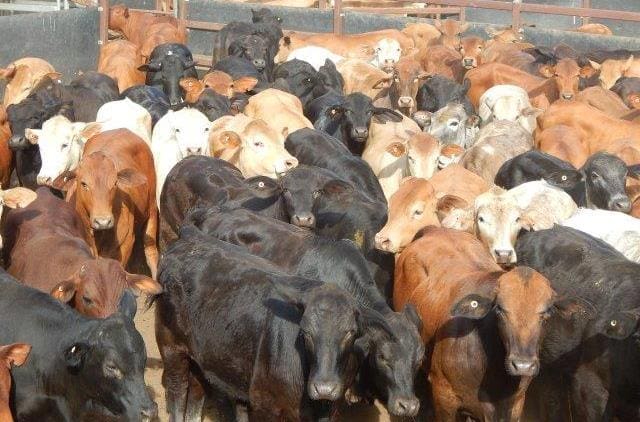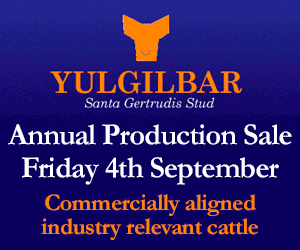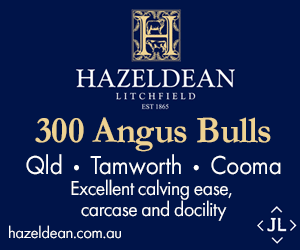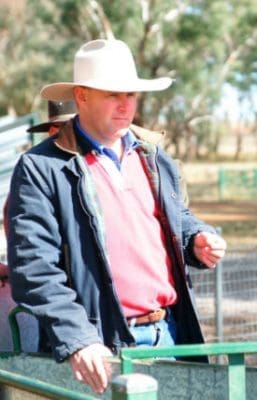
ONE of the greatest challenges for producers searching for bulls across different breeds is the ability to make comparisons on the genetic potential those bulls could offer to a beef herd.
While Breedplan EBVs are a valuable tool in the process of bull selection, it only has application for comparisons within a breed.
While some breeds such as Herefords offer Indexes based on a crossbred program, there still remains an inability to compare bulls for their potential to improve specific traits within herds.
Developing EBVs that allow multi-breed direct comparisons is actually a more difficult undertaking than many producers may appreciate. While many breeds collect information on the same traits – growth, fertility and carcase performance, for example – this is only the first part of the process. As highlighted in this column previously, accuracy of an estimated Breeding Value requires attention to issues such as cohort management, linkages between animals and herds.
Large scale livestock projects
The success of large-scale breeding and data collection projects such as those run by the CRC for Beef Genetics and the Northern Repronomics Program has provided a blueprint for further large-scale livestock research projects. The development of Multi-Breed EBVs has been identified as a significant opportunity for the beef industry, particularly for producers wanting to make direct comparisons between breeds for crossbreeding or specific industry programs.
Based on the success of breeding and measuring cattle for CRC research programs across a network of research stations, NSW DPI has become a key partner in the industry’s approach to the development of Multibreed EBVs.
 The DPI has significant grazing country in a number of varied environments, ranging from sub-tropical locations on the North Coast at Grafton, to Northern Temperate environments at Glen Innes, southern coastal locations at Maitland and Menangle and western environments at Trangie.
The DPI has significant grazing country in a number of varied environments, ranging from sub-tropical locations on the North Coast at Grafton, to Northern Temperate environments at Glen Innes, southern coastal locations at Maitland and Menangle and western environments at Trangie.
Importantly, the scale and location of these sites allows research to be conducted to ensure animals within a breeding program born, managed and recorded in cohorts, allowing the comparison of traits to be made on a head-to-head basis.
The commitment to the process by industry was demonstrated across the bull selling season of 2019, and again in 2020, with the NSW DPI actively competing to secure sires to be used within the program. The sires purchased in 2019 were chosen from Angus, Hereford, Shorthorn, Brahman, Charolais and Wagyu seedstock operations. They were joined to approximately 2000 cows, with the first calves being born across the NSW DPI sites.
The project is designed to run until 2025, with all heifers being retained and included in the project, while the steer progeny will be grown, and feedlot-finished before slaughter.
The project is estimated to produce about 3500 females and a similar number of steers. This will provide a significant data-set to underpin the developed EBVs.
Opportunity to nominate sires
While staff from NSW DPI will be a familiar sight at many of this year’s 2020 spring bull sales, the project has also expanded its search for sires more broadly. Producers can nominate sires from the Angus, Brahman, Charolais, Hereford, Shorthorn and Wagyu breeds for the project.
Although the call for sires is a general call to breeders of bulls within these breeds, there are some clear criteria for nomination. These include the requirements that bulls must have linkage with the breed; considered to have influence in the breed, both current influence and potential future.
Equally important is the requirement to have EBVs – including high accuracy and diversity across traits. All sires should be parent-verified and free from health or genetic conditions.
As the project will be relying on the use of AI, availability of semen from suitable sires is being sought. Producers nominating sires should also be able to provide proof of semen quality before shipment.
Harder to measure traits
While the multi-breed project has at its core the development of multi-breed EBVs, there will be other significant benefits from the project. As well as measuring the more common traits such as those associated with growth, fertility and carcase traits, several harder-to-measure traits will also be recorded. These include traits such as Net Feed Intake, Methane Production and Resistance to Bovine Respiratory Disease.
 The collection of these harder-to-measure traits, as well as the more comprehensive collection of production traits will offer breeders some valuable insights into their own animals’ genetic potential.
The collection of these harder-to-measure traits, as well as the more comprehensive collection of production traits will offer breeders some valuable insights into their own animals’ genetic potential.
Producers who do nominate sires will be able to gain linkages to the projects resource herd. This offers a great opportunity to increase the EBV accuracy of nominated sires and their close relatives. The additional benefit will be to also receive data on harder-to-measure traits as well as having data from progeny of sires entered into the across-breed genetic evaluation.
There are many seedstock breeders now offering two or more breeds as part of their annual sales. For these producers, this project, as well as contributing to development of multi-breed EBVs, the data will provide their clients with a more transparent opportunity to compare the genetic potential of sire breeds in a catalogue to find the most suitable sire for their business.
The development of a multi-breed EBV that can be used with confidence has been a long time in coming. However, this project is the most significant undertaking to address what has often been considered by some breeders as a “holy grail”.
Nominations closing Friday
For producers wanting to nominate bulls for the project, they will have until this Friday, 31 July. Nominations can be done online using this link.

Alastair Rayner
Alastair Rayner is the Principal of RaynerAg, an agricultural advisory service based in NSW. He regularly attends bull sales to support client purchases and undertakes pre sale selections and classifications. He can be contacted here or through his website www.raynerag.com.au
